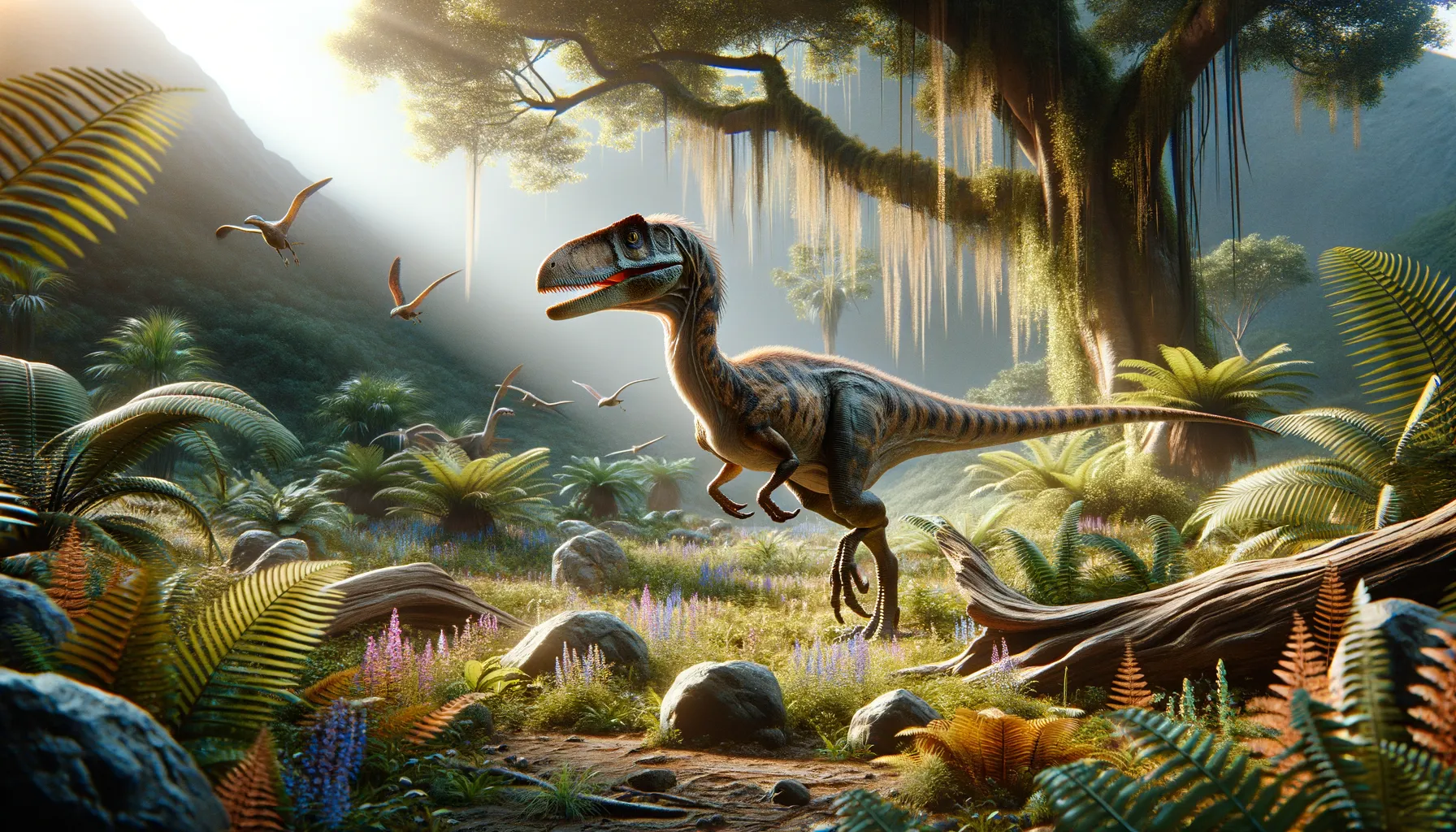
Tianyuraptor
A swift predator from ancient winds.
Period
Cretaceous
Length
Measured about 1.5 meters in length.
Height
Stood roughly 0.5 meters tall at the hip.
Weight
Estimated to weigh around 25 to 30 kilograms.
Tianyuraptor is a fascinating theropod dinosaur from the Late Cretaceous period. It had a bird-like stature, suggesting evolutionary links to modern birds. Known for its long tail and lightweight frame, Tianyuraptor offers insights into the transitional phase between terrestrial and avian dinosaurs. The discovery of this species has added significantly to our understanding of the diversity and adaptability of small predatory dinosaurs in Asia.
Diet
Tianyuraptor was carnivorous, primarily preying on small vertebrates. Its diet likely included mammals, small reptiles, and other dinosaurs.
Hunting
Tianyuraptor likely relied on its agility and speed to hunt. Its sharp claws and teeth were well-suited for capturing and consuming prey.
Environmental challenges
Living in what is now known as China, Tianyuraptor faced challenges such as fluctuating climates and competition for resources. It thrived in an ecosystem with other theropods, requiring efficient hunting strategies. Climatic shifts could affect prey availability, forcing adaptations in hunting techniques and diet selection.
Speed
Moderate runner, capable of quick bursts.
Lifespan
Estimated to be around 15 to 20 years.
First discovery
Discovered in Liaoning Province, China in 2009.
Fun Facts
- Tianyuraptor was a feathered dinosaur from the early Cretaceous period, about 120 million years ago.
- This dinosaur was discovered in the northeastern part of China, in a region known for its rich fossil beds.
- Tianyuraptor was a close relative of the famous Velociraptor, sharing a similar body structure.
- Unlike some of its relatives, Tianyuraptor had longer hind legs, suggesting it was a swift runner.
- Fossils of Tianyuraptor show evidence of feathers, indicating it may have had some connection to the evolution of birds.
- Tianyuraptor's name means 'Tianyu's thief', named to honor the fossil bird museum in Shandong, China.
- It likely feasted on small animals and possibly even scavenged for food due to its size and agility.
Growth and Development
Young Tianyuraptors likely grew rapidly to evade predators. Their development involved learning to hunt and fend for themselves relatively early. This fast growth would be crucial for survival in a hostile environment.
Habitat
Tianyuraptor inhabited dense forests and open plains where it could pursue prey. These environments provided cover and diverse prey options. The varied landscape allowed it to utilize its physical adaptations efficiently.
Interaction with other species
Tianyuraptor coexisted with many small and large dinosaurs, possibly competing with similar-sized predators. It might have stolen prey or scavenged from larger carnivores' leftovers. Its presence in a rich ecosystem meant complex interactions were frequent.
Natural lifespan
The natural lifespan of Tianyuraptor was similar to other small theropods, estimated at 15 to 20 years.
Reproduction
Tianyuraptor laid eggs, likely in protected nests. Parental care was possible, with adults guarding the nest and young. Nesting sites could have been shared or reused, suggesting a degree of social structure.
Social behaviour
Tianyuraptor might have operated in small groups or solitary. Social behaviors could include raising young together or cooperative hunting. These behaviors would increase the survival odds amid various predators.
Fossil locations
Fossilized remains of Tianyuraptor have predominantly been found in the Liaoning Province of China. This area is rich with other dinosaur fossils, providing valuable context for paleontologists. The region's fine sediment preserved delicate skeletal features, aiding in comprehensive studies.
